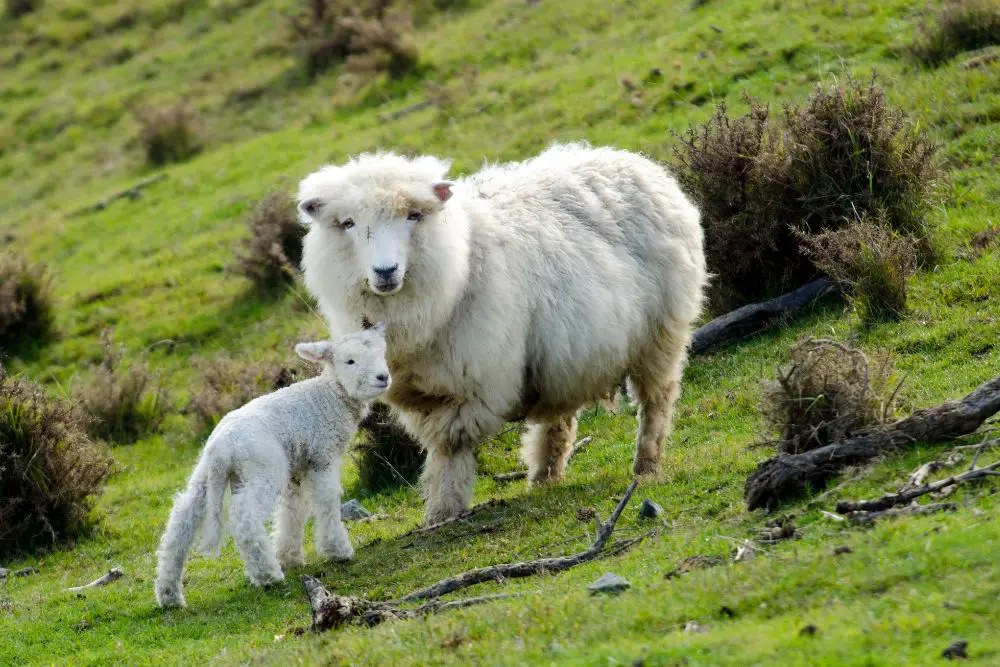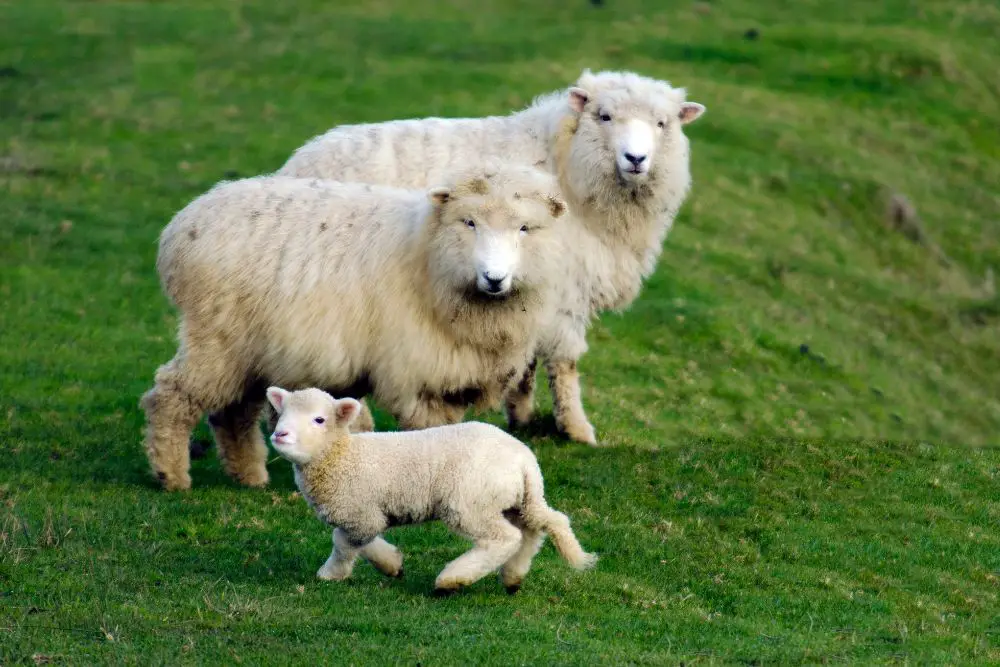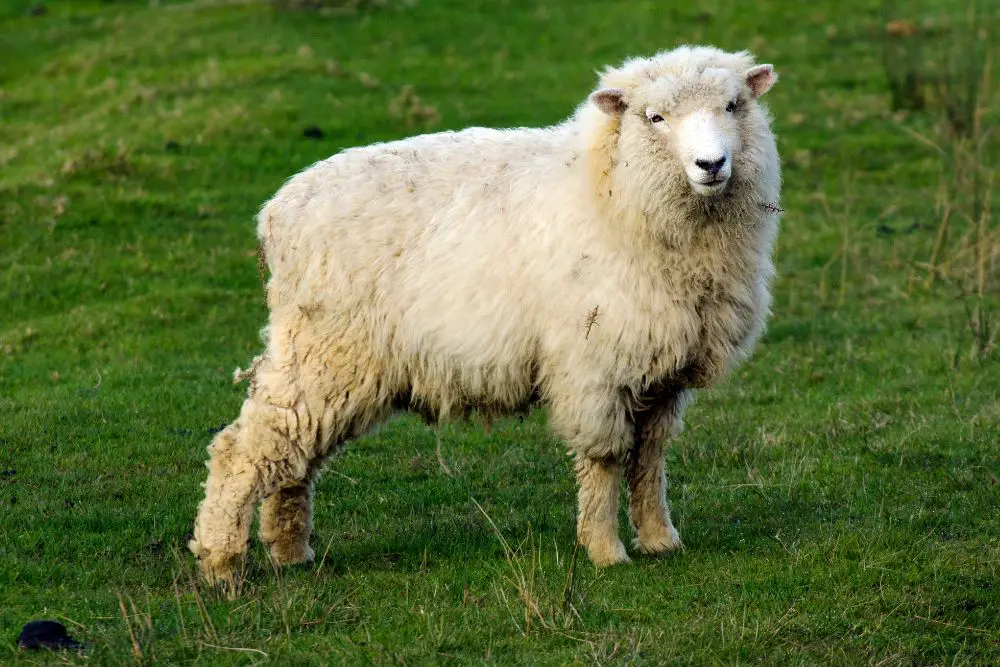Perendale Sheep were bred specifically for rainy climates and steep cliffs. This breed is for those seeking a medium-sized, white domestic sheep that produces both quality wool and delicious mutton.
This article will delve into the history of the Perendale sheep, cover their breed attributes, and examine the characteristics of their wool in detail. It will also list the positive attributes and benefits of owning Perendale sheep.
Table of Contents
Where do Perendale Sheep Come From?
Perendale sheep are named after Sir Geoffrey Peren, who worked at Massey Agricultural College in 1956, and was tasked with creating a sheep breed that could survive in high rainfall areas atop the hills of New Zealand, where little vegetation was growing due to overgrazing by the native sheep.
He successfully crossed Romney ewes with Cheviot rams at Massey University, and the outcome was the Perendale breed of sheep – a breed that was a dual-purpose sheep, good for wool production, and meat.
Perendale ewes made excellent mothers and lambing was easy, which increased their popularity.
This breed proved that it could withstand multiple environments from hill country to grassy plains, where other purebred breeds could not survive, so much so that they were even imported to Australia and North America, where they have since thrived.
This breed quickly became popular in New Zealand, and in 1959 the Perendale Sheep Society of New Zealand was founded.
Selective breeding has continued such that if a Romney ewe was crossed with a Cheviot ram today, the resulting offspring would not necessarily exhibit all of the desirable characteristics of the current populations, which have been carefully cultivated over the course of the past 70 years.
What are the Characteristics of the Perendale Sheep?
| Characteristics | Description |
| Origin | New Zealand (Palmeston North) |
| Appearance | The Perendale sheep is a white open-faced sheep with a medium body size and small head with a top knot, that produces a high-quality carcass and a beautiful fleece. |
| Wool | White wool with a micron range from 29 to 35 Wool grade between 44’s to 54’s Staple length between 4 and 6 inches Grease fleece weight of 8 pounds Yield between 50 to 60 percent. |
| Weight | Rams weigh between 220 and 260 pounds Ewes weigh between 120 and 150 pounds |
| Fertility | Relatively easy to reproduce and can cross-breed with Merinos |
| Meat | Excellent quality carcass |
| Environment | Bred for cooler climates such as the mountains of New Zealand |
| Common Uses | Meat and wool production |


Both rams and ewes do not have strict breed standards for appearance because they are valued for production, not shows. However, they should have a clean face, with prominent withers and narrow shoulders, and carry their heads upright.
What Kind of Fleece Does the Perendale Produce?
The Perendale produces soft and fine fleece as a longwool breed. The fleece has a fine crimp, is fairly lofty, and is moderately lustrous.
Their fleece is good for making woven rugs, as well as sweaters, and the yarn is crisp and takes to dye well.
Why Should You Raise Perendale Sheep?
There are many reasons why you should consider raising Perendale Sheep on your sheep farm:
- They are well-known for hardiness
- Perendale wool is versatile and highly prized
- Lambing is relatively easy because Perendale ewes are good mothers
- They are intelligent sheep that are not overly aggressive
- Perendale ewes are highly fertile and it is possible to obtain a prime ewe lamb when they are cross-bred with Merinos
- They are dual-purpose and can also be used for meat production
- They do well in cold, rainy environments and are highly adaptable to other environments

